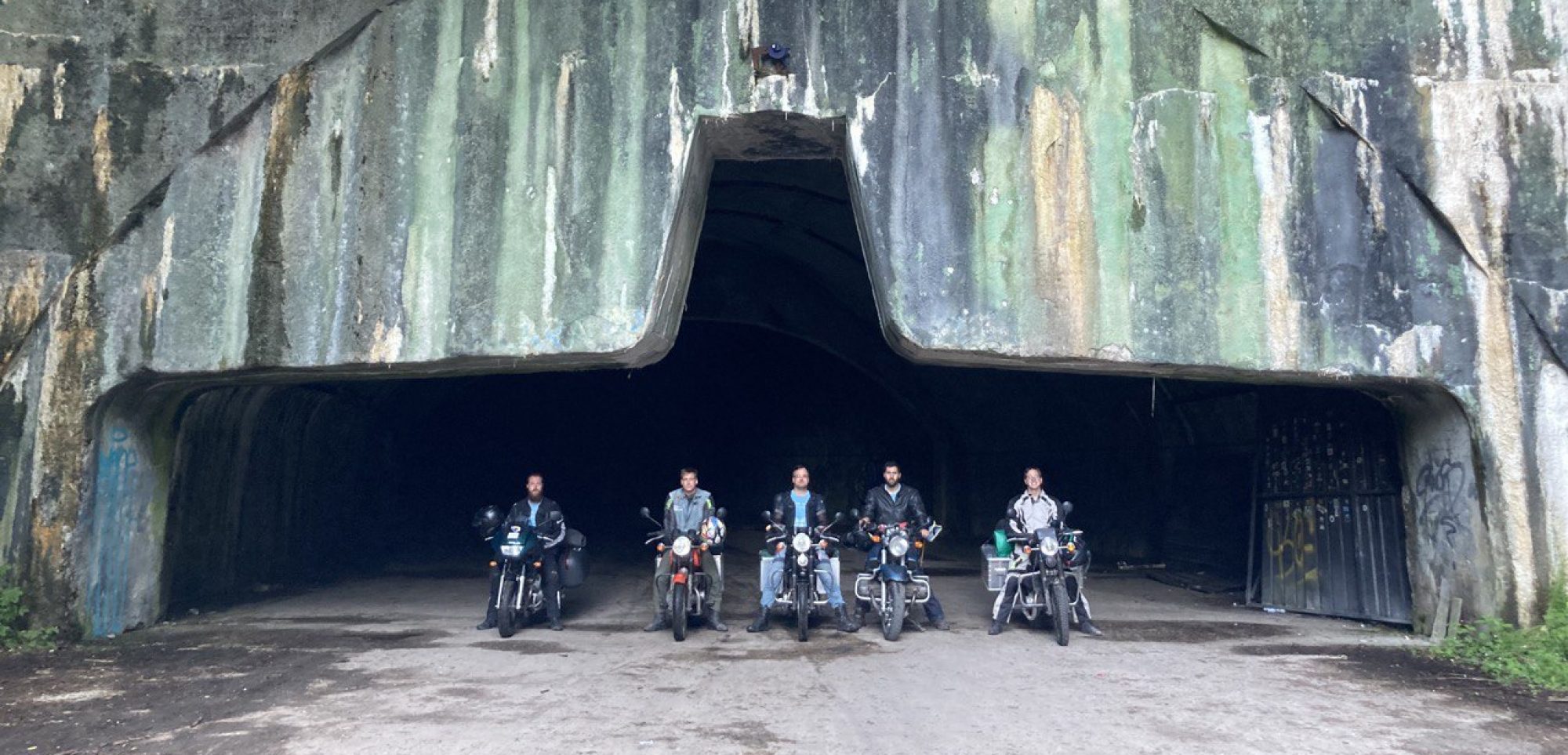Ranní probuzení přišlo dříve, než jsme očekávali kolem půl patě ráno. Déšť nás vyhnal z ležení, jelikož Vojta musel natáhnout plachtu přes svůj bivak a my s Jardou schovávali věci, které jsme nechtěly, aby zmokly.
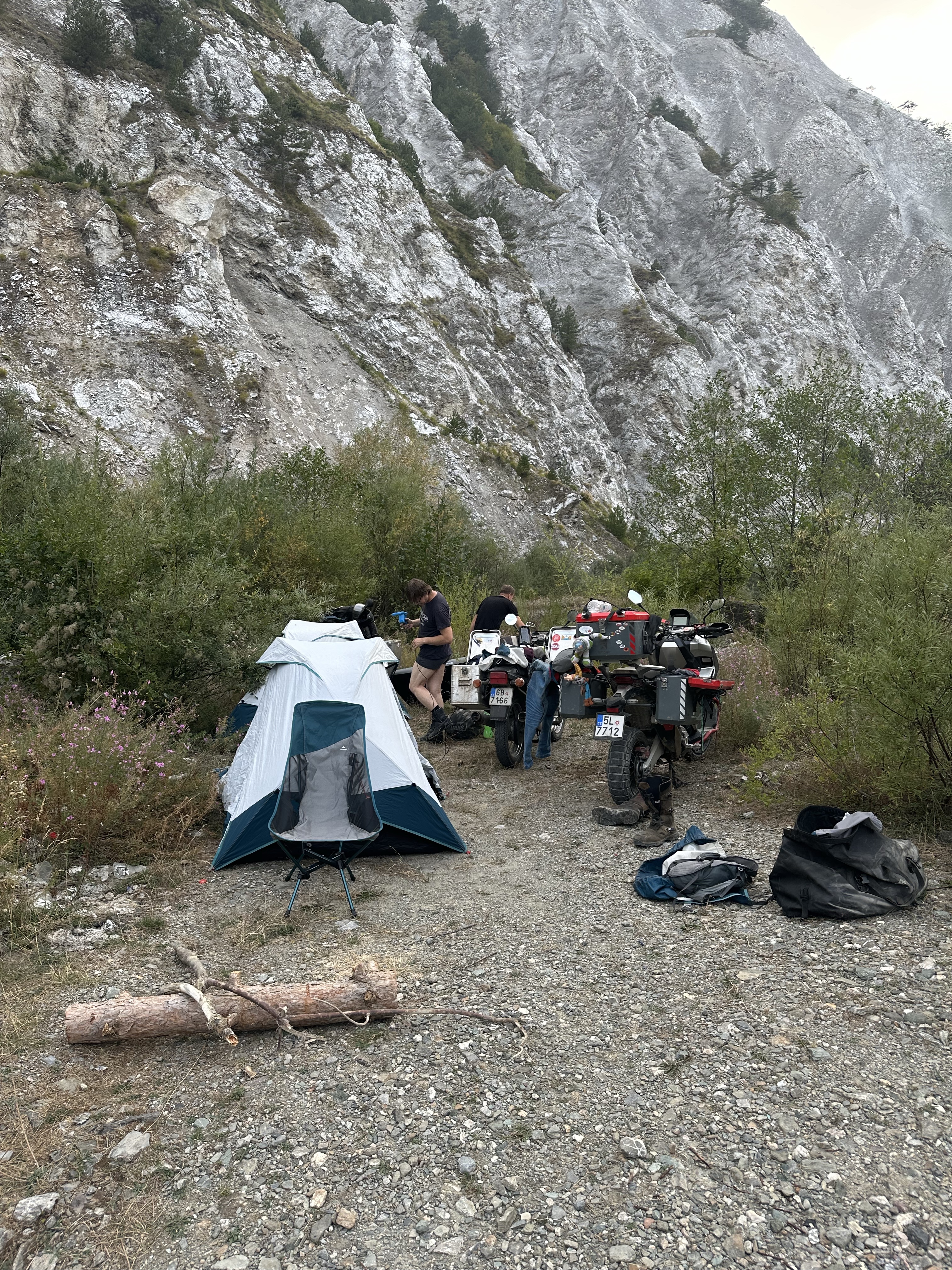
Desátá hodina odbyla a motorka se rozjela směrem k památné zatáčce, kde náš souputník z cestovatelské skupiny A zanechal svou nezapomenutelnou stopu. Více na najdete v Zideníčkách skupiny A.
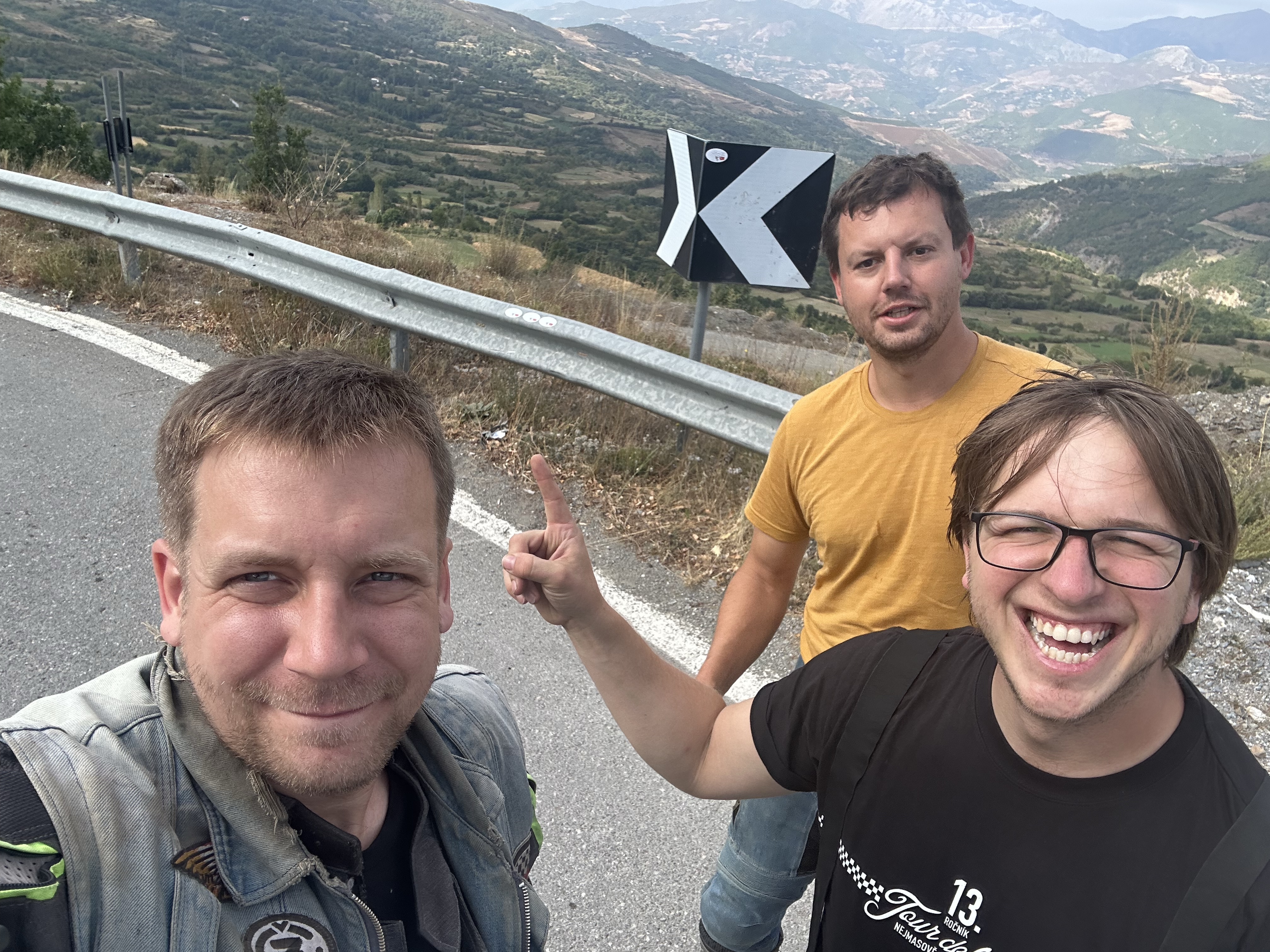
Cesta nás dále vedla skrze Albánské hory, které nám poskytly neuvěřitelné výhledy a krásně zakroucené zatáčky. Úsek dlouhý 50 kilometrů byl zakončen návštěvou restaurace, která se vyznačovala celkem dlouhou prašnou štěrkovou cestou a na jejím konci stala velká, moderně vyhlížející restaurace s nastoupeným personálem před vchodovými dveřmi. Objednali jsme si snad všechno co na jídelním listu bylo. Od rybí polévky, přes sýrové prkénko, mix salátu, až po boloňské špagety. Kvalita jídel byla různorodá, ale vcelku nám chutnala.
Po vydatném obědě nás čekalo 120 kilometrů po silnici SH5, která nás překvapila svou rozmanitostí zatáček, kterých mohlo být i přes tisíc a to nepřeháníme. V podstatě co 20 metrů to zatáčka. Poměrně specifickým jevem na této silnici byly v zatáčkách vyfrézované dlouhé pruhy, cca 5 centimetrů široké, které se objevily u krajnice a pokračovaly zhruba do půlky pruhu a po pár metrech zpět do krajnice. Naši dedukcí jsme došli k tomu, že se jedná o ochranu silnice před erozí půdy, aby se celý povrch neztrhl se zbytkem vozovky. Problematické bylo, že ty spáry byly sice původně zalité asfaltem, ale po čase se asfalt vymlel a v podstatě tam zbyly široké brázdy. Jak motorkáři vědí, tak je to poměrně nebezpečná část vozovky, která si s vámi může hravě pohrát. Poměrně jsme si na tuto charakteristiku cesty zvykli a dokázali jsme stanovit hodinový ujetý průměr 40 kilometrů za jednu hodinu. Celkově nás na trase překvapila nízká teplota až 17 stupňů celsia, což oproti předešlým dnům byl znatelný skok.
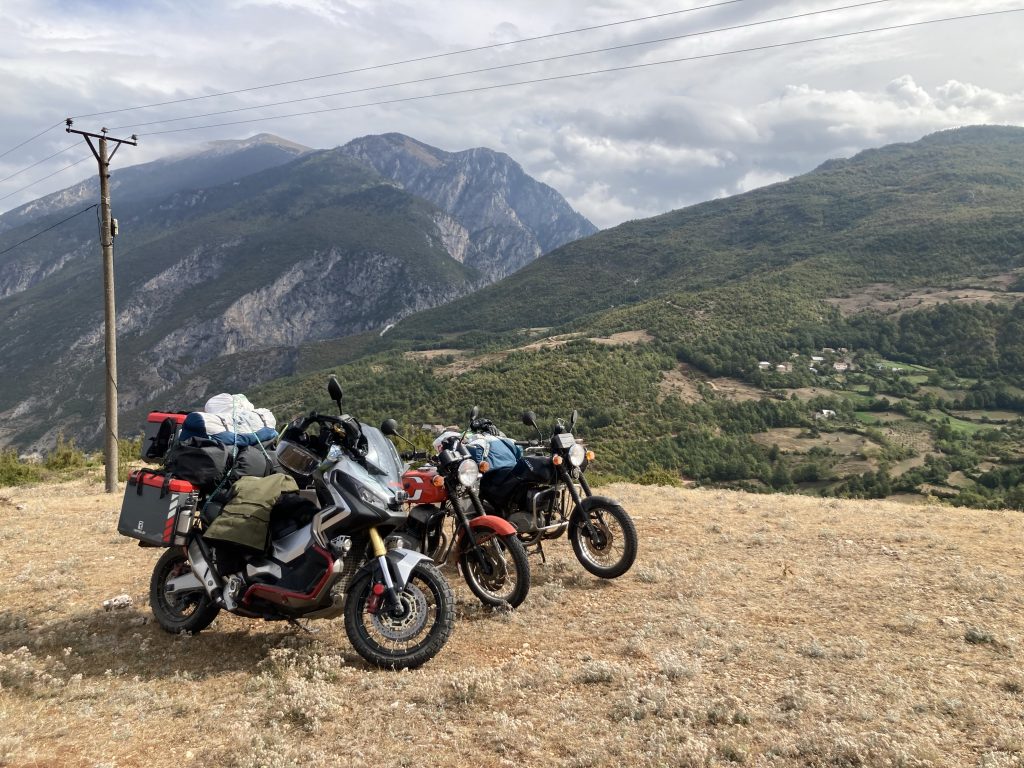
Chvilku před západem slunce se nám podařilo najít perfektní místo v meandru jezera, nebo řeky Driny, není to úplně jisté.
Toto místo se vyznačuje tím, že je to poloostrov, který při vytrvalém dešti se stane samotným ostrovem.
Na místě nás přivítal místní postarší pastevec ovcí, který byl z nás hotový a to v pozitivním slova smyslu. Ukázali jsme mu naše vybavení na přespání. Naše stany, které se postaví za dvě sekundy, či nafukovací matrace, které umíme nafouknout přes vzduchovou pumpu napojenou na motorku, či takové drobnosti, jako samo nafukovací polštářek, nebo světýlko do stanu. Nejvíce ho uchvátila skládací židlička, do které se posadil a udělal slastné hmmm.
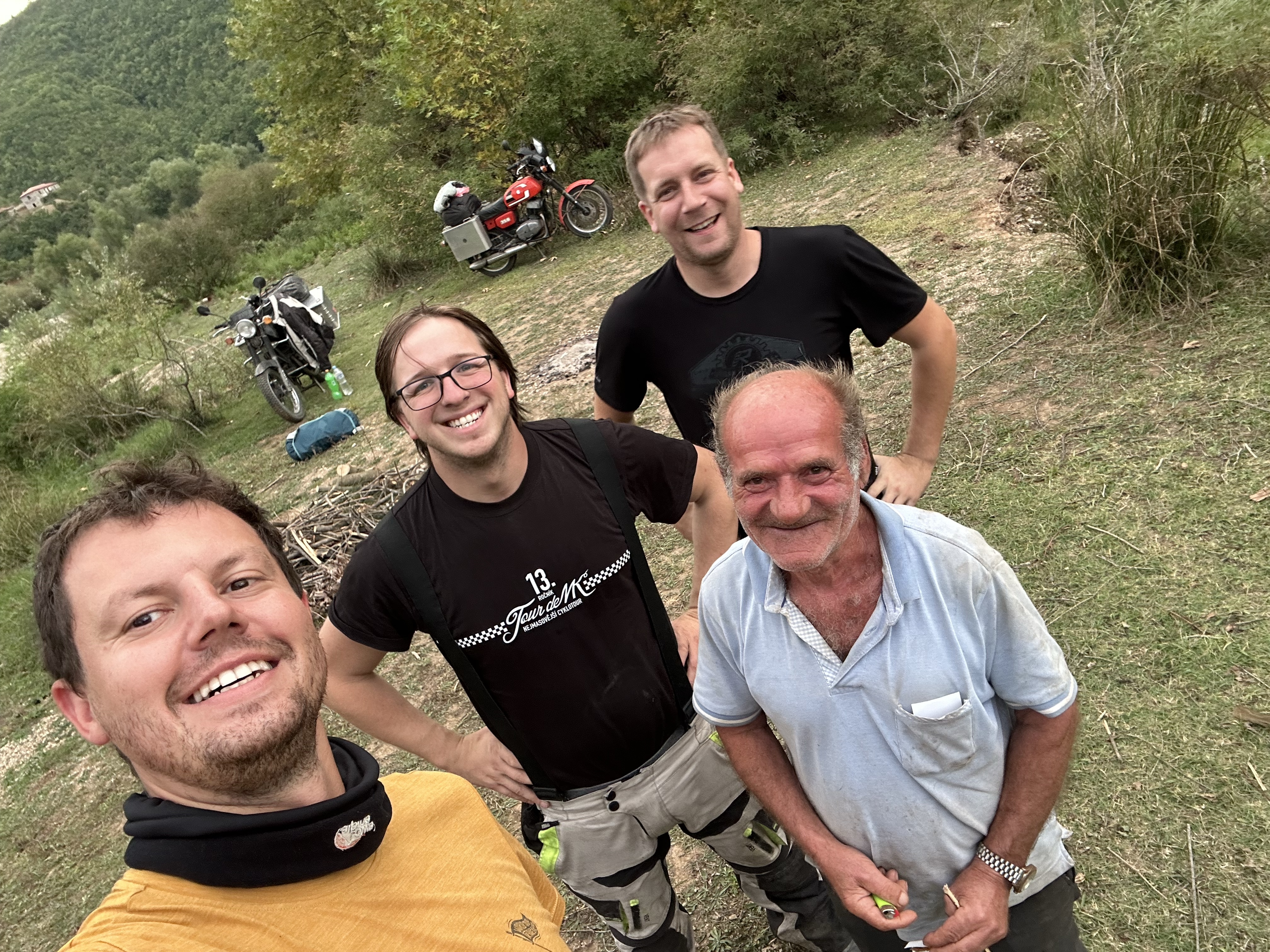
Teď sedíme u ohně s pivkem v ruce a plánujeme naši trasu přes národní park Thet.
English:
Morning awakening came earlier than expected, around half-past four in the morning. Rain drove us out of our tents as Vojta had to stretch a tarp over his bivouac, and Jarda and I were stashing things we didn’t want to get wet.

The tenth hour struck, and the motorbike started toward the famous turn where our fellow traveler from travel group A left his unforgettable mark. You can find more about it in the diary of travel group A.

Our journey continued through the Albanian mountains, which offered us incredible views and beautifully winding curves. The 50-kilometer stretch ended with a visit to a restaurant that was marked by a fairly long dusty gravel road, and at its end stood a large, modern-looking restaurant with staff waiting at the entrance. We ordered almost everything on the menu, from fish soup to a cheese platter, mixed salad, and bolognese spaghetti. The quality of the food varied, but overall, we enjoyed it.

After a hearty lunch, we had 120 kilometers to go on road SH5, which surprised us with its diverse hairpin turns, which there could have been over a thousand, and we’re not exaggerating. Essentially, every 20 meters, there was a curve. A somewhat specific feature of this road was the long, roughly 5-centimeter-wide grooves that were milled in the curves, starting from the edge and continuing about halfway into the lane, then a few meters back to the edge. Our deduction led us to believe that this was to protect the road from soil erosion, preventing the entire surface from breaking away with the rest of the road. The problem was that while these gaps were originally filled with asphalt, over time, the asphalt wore away, and essentially, wide ruts remained. As motorcyclists know, this is a rather dangerous part of the road that can play tricks on you. We got used to this characteristic of the road fairly quickly and managed to maintain an average speed of 40 kilometers per hour over an hour. Overall, we were surprised by the low temperature on the route, as low as 17 degrees Celsius, which was a noticeable drop compared to the previous days.
Just before sunset, we managed to find the perfect spot in a meander of a lake or the Drina River, it’s not entirely certain. This place is characterized by being a peninsula that becomes an island during heavy rain.
We were greeted by a local elderly shepherd of sheep, who was genuinely impressed by us, in a positive way. We showed him our sleeping equipment, our tents that can be set up in two seconds, inflatable mattresses that we can inflate through an air pump connected to the motorcycle, or even little things like a self-inflating pillow or a small light for the tent. He was most enchanted by the folding chair, into which he sat and made a contented „hmmm.“

Now we’re sitting by the fire with beers in hand, planning our route through Theth National Park.
